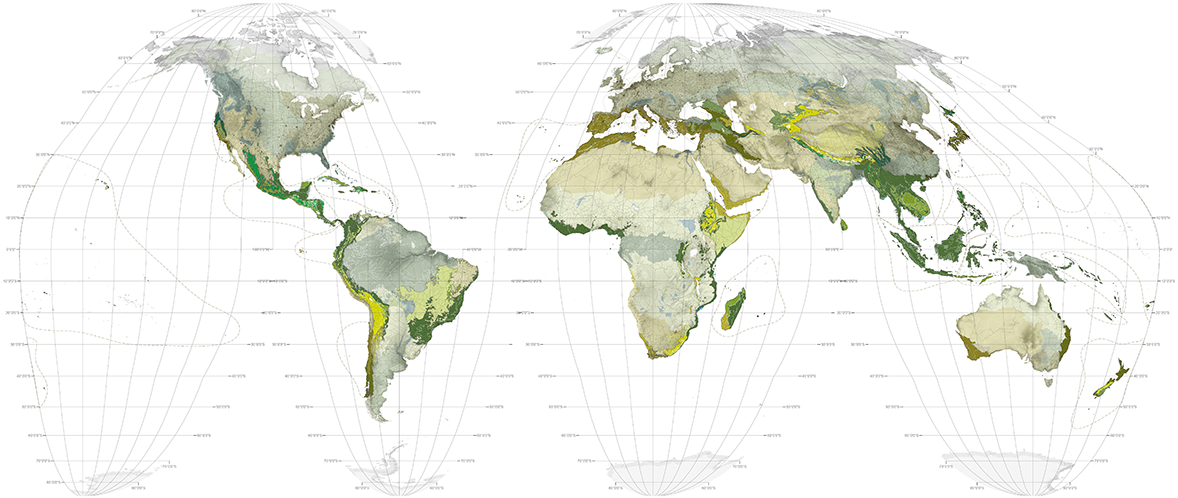The concept of biomes as a system for delineating and describing the world was first introduced by Robert Whittaker in 1962 and later refined by Miklos Udvardy in his contribution to UNESCO's Man and the Biosphere Program in 1975. Historically, biomes have been classified based on vegetation type and regional variations in climate. Udvardy divided the terrestrial world into 14 types: tropical humid forests, subtropical and temperate rain forests, temperate needle-leaf forests, tropical dry or deciduous forests, temperate broad-leaf forests, evergreen sclerophyllous forests, warm deserts, cold-winter deserts, tundra, tropical grasslands and savannas, temperate grasslands, mountain systems, island systems, and lake systems. These broad categories can be further broken down into 867 ecoregions.
Whilst mapping that foregrounds the world's biomes and ecoregions is useful for assessing habitat loss and habitat protection, this representational system is criticized as inappropriate to the epoch of the Anthropocene because it occludes human modification of the landscape. By foregrounding habitats as they would be in a world without humans, it can be argued that the biomes map reinforces a fictional dualism between culture and nature. With increasing awareness of prehistoric and modern global anthropogenic influence, geographers and ecologists are seeking a new system of classification to reflect a world that is now shaped by humanity (see; Anthromes).
1. Biomes
D. M. Olson, et al., "Terrestrial ecoregions of the world: a new map of life on Earth," Bioscience 51, no. 11 (2001): 933-938. Available at http://www.worldwildlife.org/publications/terrestrial-ecoregions-of-the-world.
